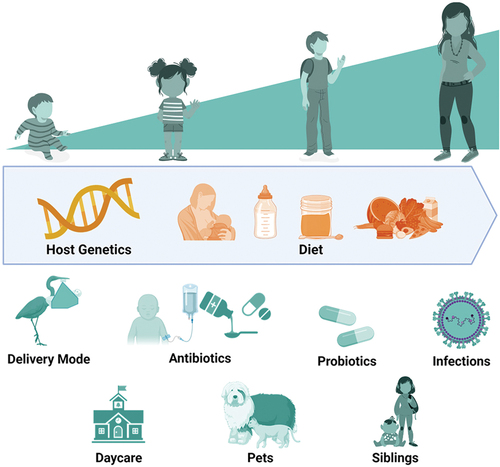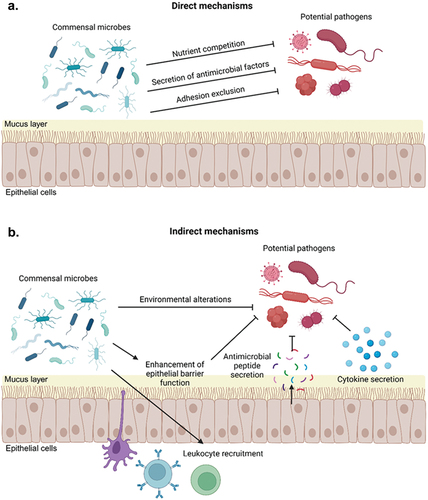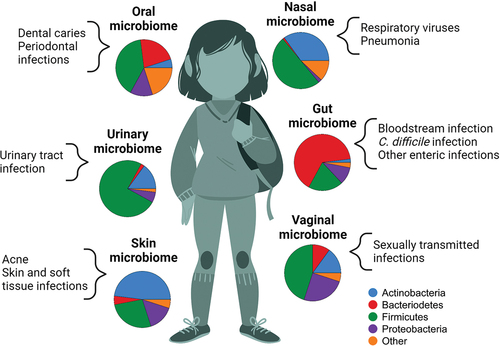Figures & data
Figure 1. Host and environmental factors that influence human microbiome composition. Diet has a major influence on the composition of human microbial communities across the lifespan. Delivery mode is among the most important influences on the microbiota during infancy. Other environmental exposures, such as antibiotic treatment or daycare attendance, can have profound, short-term effects on microbiota composition. Host genetics influences microbiota composition at all ages, albeit to a far lesser extent than environmental exposures.

Figure 2. Overview of mechanisms of colonization resistance. Commensal microbes can inhibit colonization and invasion by exogenous pathogens through direct (a) and indirect (b) mechanisms. Direct mechanisms of colonization resistance include competition for space or adhesion sites, nutrient consumption, or secretion of antimicrobial peptides or other factors that directly kill exogenous pathogens. Indirect mechanisms of colonization resistance include altering the local microenvironment so that is it less hospitable to exogenous pathogens and modulation of host immune responses, including by altering cytokine production, recruiting leukocytes to mucosal surfaces, and stimulation production of host antimicrobial peptides by epithelial cells.

Figure 3. The impact of the microbiome on infections during childhood and adolescence. Substantial variability exists in the composition of the microbial communities that colonize children and adolescents at different anatomical sites. The pie charts in this figure depict the relative proportion of sequencing reads assigned to specific bacterial phyla at six body sites. Variability in microbiome composition across individuals at a specific anatomical site contributes to observed differences in infection susceptibility and severity across children.

Table 1. Correlative clinical studies that evaluated the bacterial gut microbiome as a modulator of immune responses to vaccination.

